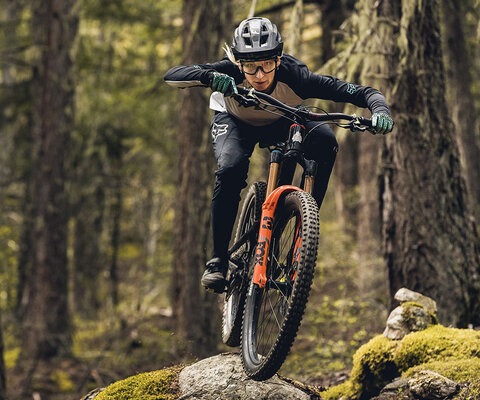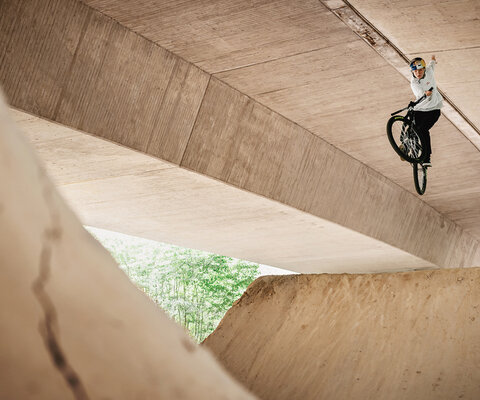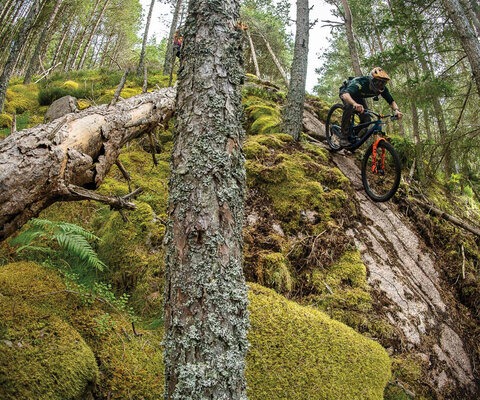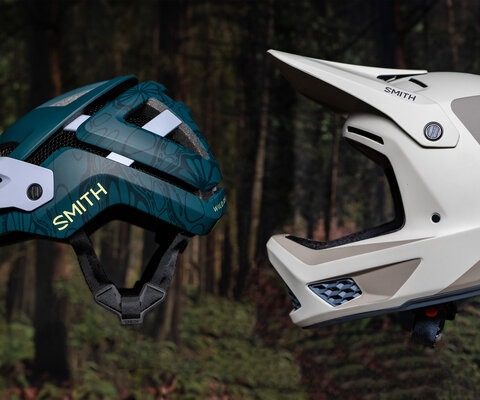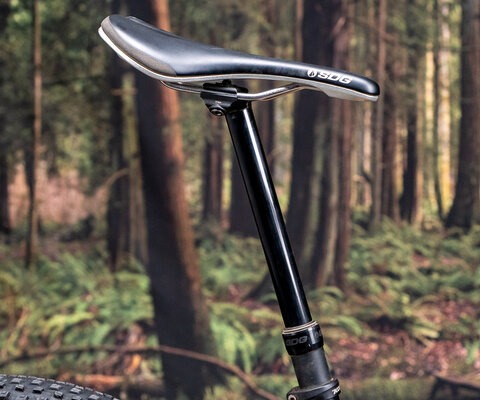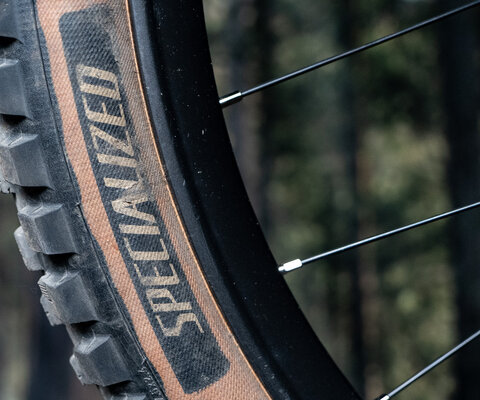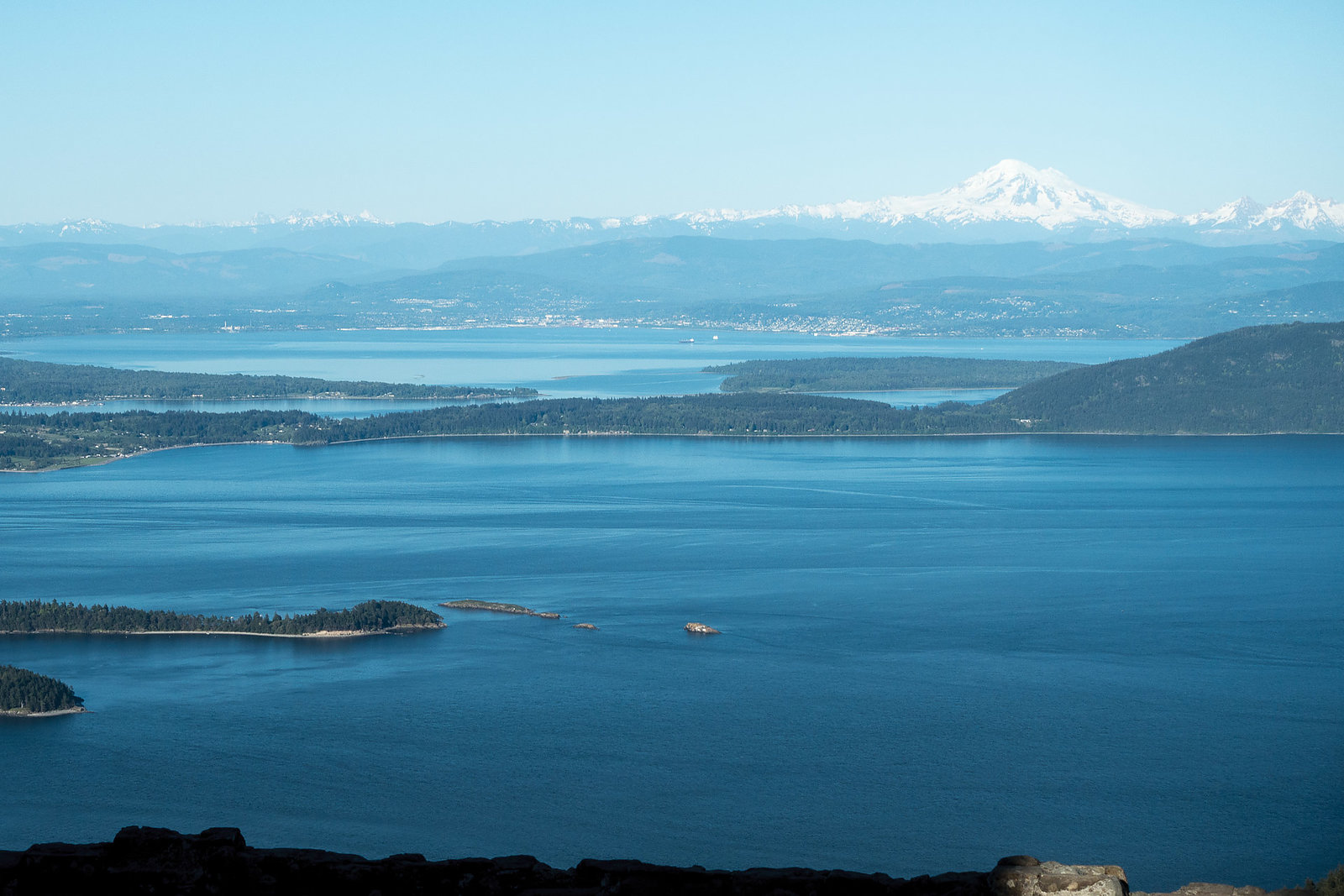
A World Away Ride, Relax, Repeat on Orcas Island
Words by Jann Eberharter | Photos by Ian Terry
Every year during the first weekend of May, the ferry to Orcas Island is packed with mountain bikers.
An assortment of vans, trucks, minivans and Subarus fill the Anacortes terminal’s 16 lanes, waiting for their chance to start the hour-long motor to the forested cluster of the San Juan Islands. It can be a long wait; it’s the last weekend before Orcas’ summer bike closure, and from the DH, enduro and XC bikes stacked and packed into the mob of vehicles it has the makings of one big party.
The weekend’s popularity might be due to the ferry ride, which makes the island feel a world away. Or maybe it’s having a paved road to the top of the 2,398-foot Mount Constitution and the ability to pack a shuttle truck beyond the brim. It could also be the trailhead lake-side camping, a mountain bike factor that can rival an all-inclusive resort. Or maybe it’s the miles of singletrack falling from the summit of the San Juan’s tallest peak. Whatever the reason, mid-May on Orcas Island is a singletrack bender.
At 57 square miles, the horseshoe-shaped island is the largest in the San Juan archipelago. All the elevation and most of the singletrack is on the east side of the island, leading giddy bikers through rolling hills, dank forest and past the famously wild skatepark to their destination. Twelve miles from the ferry dock, the highway passes under a concrete archway at the entrance of Moran State Park, a 5,000-plus acre plot of land that was originally given to the state of Washington in 1921 by Robert Moran, Seattle’s mayor from 1888 to 1890. The arch is the first sign of the history that’s made Orcas Island such a mountain bike paradise. Thanks to President Franklin D. Roosevelt’s New Deal program, in 1933 the 4768th Company of the Civilian Conservation Corps established Camp Moran. The workers, from as far away as Minnesota and New York State, set out to build infrastructure, trails and much more to promote recreation in the park. The culmination of their projects was a stone lookout tower at the top of Mount Constitution. A crew of 28 men began construction in late summer of 1935, with a crew of eight men harvesting sandstone from the quarry on the northern side of the island. It took two years, but by 1937 the tower stood proudly at the summit.
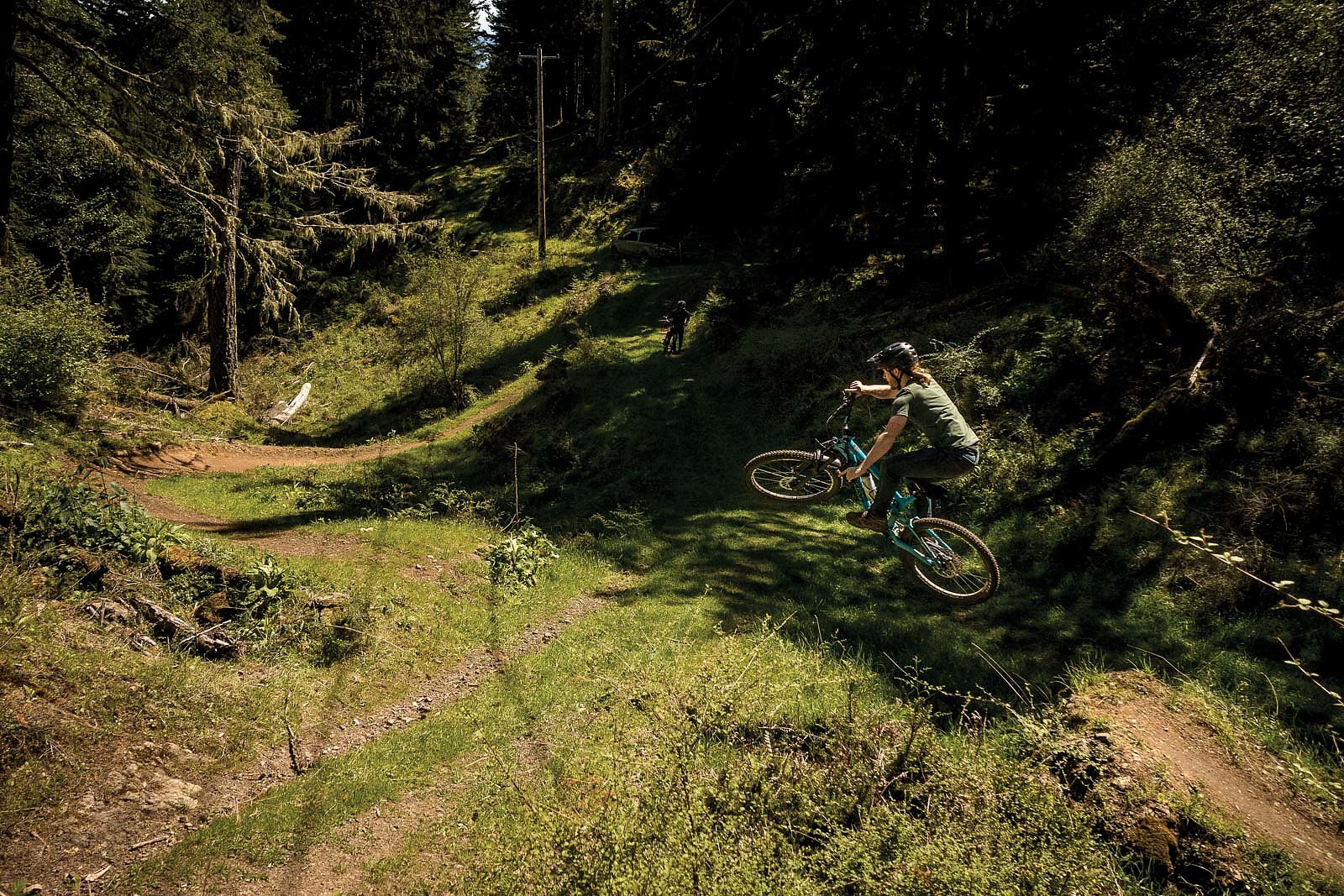
At the time, the workers surely figured the tower would be their lasting legacy, a symbol that would endure as the highest point and best view in San Juan County. And it is; tourists flock to the island year-round, and the tower is one of the highlights. Looking east, it’s always a guessing game to which island is which, but it’s guaranteed to be stunning—if you’re not in the clouds. Mountain bikers can also appreciate the vista and craftsmanship, however, the singletrack below is too enticing to spend much time inspecting the details.
The same CCC crew that built the tower also built the road leading to it, which is why the island has what might be the smoothest shuttle road in the state. It’s equally steep; it has an average grade of 8.5 percent, spread out over a number of switchbacks. From the summit, two trails drop off that lead into a multitude of others. The Summit View trail provides cliff-top riding and salty fresh air as it contours the east side of Mt. Constitution for a mile, eventually connecting with the road again. This makes for a perfect half lap, or opportunity to link with other options like the Twin Lakes trail, or the meandering single- and double-track of Mount Picket and Mountain Lake trails. Mountain Lake provides some shore-side XC cruising, where wandering herds of deer are common company. Mount Picket, on the other hand, is some exceptionally fun (and wide) trail, that’s best experienced at high-speeds with a large group of friends.
While the majority of Orcas’ trails were built for hikers, there is one specifically built for mountain bikes: Power Line trail. On the west side of Mt. Constitution and a 10-minute ride from the summit, the trail follows an old double-track underneath—you guessed it—a power line. Built 14 years ago by two island residents, Justin Adams and Ezra Richardson, the trail begins on private property before dropping into the park, making for some interesting legality. With that in mind, Adams and Richardson worked with the park throughout the build, securing proper permits and receiving support from rangers. But despite their efforts and the backing of several park managers, the trail’s future has been in limbo since its inception. It’s a frustrating and unmotivating situation as far as activism goes, and public support has been lacking—even more discouraging, especially considering how many people ride (and love) the trail.
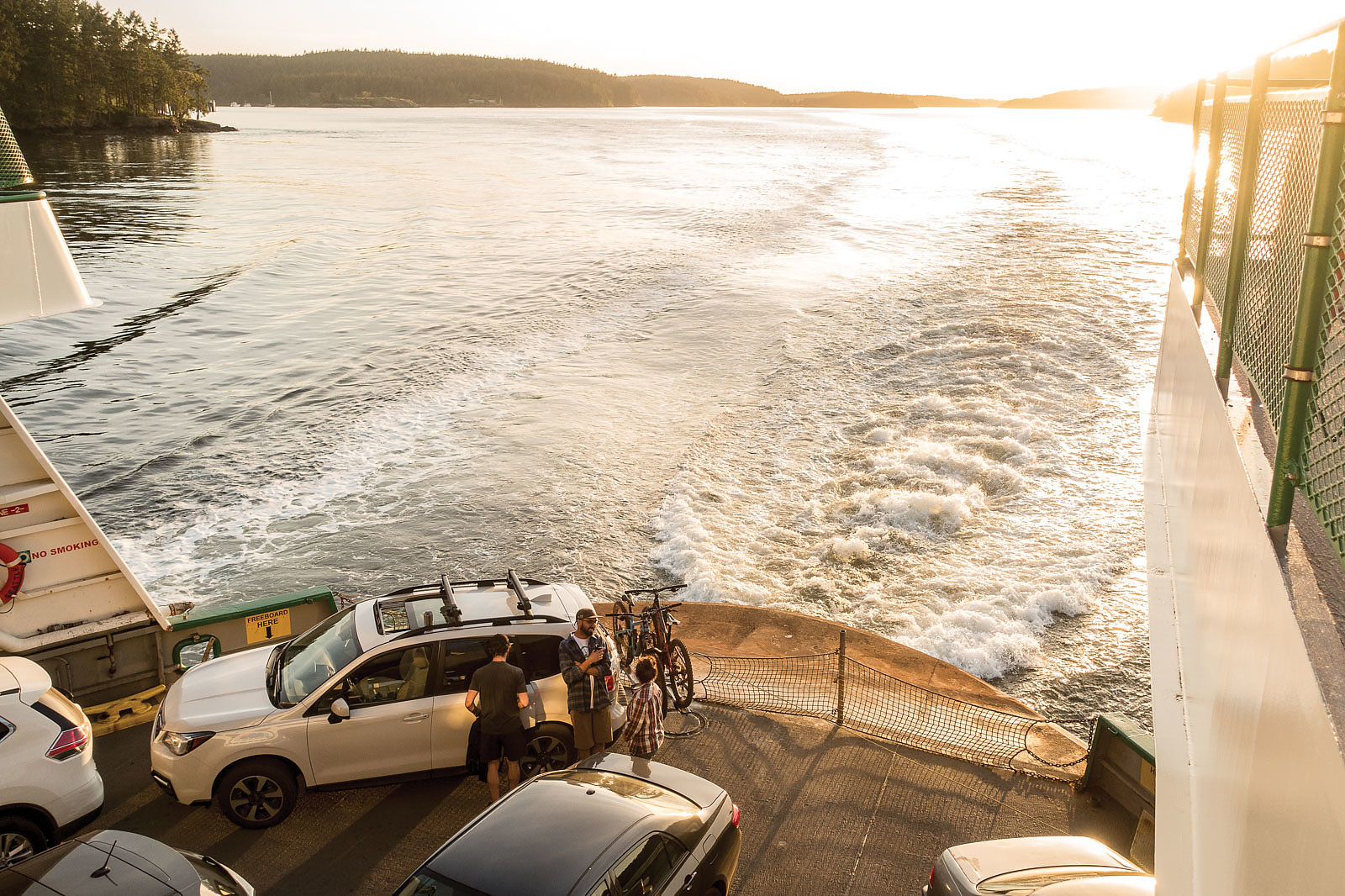
Legality aside, the open swath of earth is a freerider’s paradise, one of those trails that can easily occupy an entire weekend on its own. With progressively larger gap jumps, some high-speed moments and a few technical sections, it’s also not one that sails easily with “trail speed”; it’s the perfect example of “pre-ride,” “re-ride,” “free-ride,” but that just makes it more interesting. Whenever a truck full of DH bikes and full-face helmets is spotted on the way up, this is guaranteed to be their way down.
Whatever the route, all shuttle laps end a short way from a campsite, meaning a cooler full of tasty beer is never more than a few pedals away. Once the sun dips below the island’s coniferous trees, the temps drop and the ripples on the lake settle into pure glass. The fire crackles and occasionally spits out coals as the grill warms up. Conversations and cold beers carry the night away, everyone riding out the day with a few stories of their own. It’s ride, relax, repeat, until the weekend wraps up. On Sunday night, another packed ferry, full of exhausted and fully satiated mountain bikers returns to reality after a visit to Puget Sound’s island of singletrack paradise.
